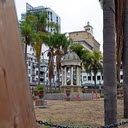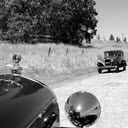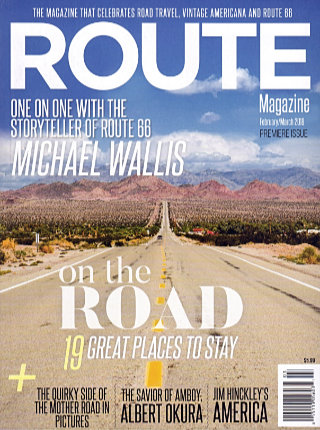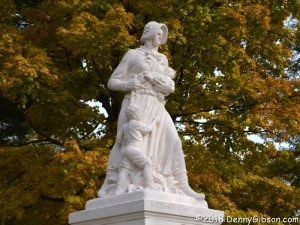 The Madonna of the Trail statues were one of the first things that entered my mind when I initially started thinking of sets of things I had seen all of. When the era of named auto trails came to an end, a couple of the major auto trails undertook projects aimed at keeping their names alive for posterity. The Lincoln Highway was marked by nearly 2,500 concrete posts that literally guided travelers along the entire route. The National Old Trails Road Association’s project was, in some sense, less ambitious in that only twelve markers were placed; One in each state the highway passed through. The markers themselves were much larger and more intricate than direction markers and all twelve still exist at or near their original locations which makes seeing the whole caboodle possible. Photos of the statues follow in the sequence in which I first saw them with the exception of the photo at right. That’s a 2018 photo of the Madonna in Richmond, Indiana. Comments accompanying the pictures include the date of dedication, its position in the sequence of dedications, and the coordinates of its location.
The Madonna of the Trail statues were one of the first things that entered my mind when I initially started thinking of sets of things I had seen all of. When the era of named auto trails came to an end, a couple of the major auto trails undertook projects aimed at keeping their names alive for posterity. The Lincoln Highway was marked by nearly 2,500 concrete posts that literally guided travelers along the entire route. The National Old Trails Road Association’s project was, in some sense, less ambitious in that only twelve markers were placed; One in each state the highway passed through. The markers themselves were much larger and more intricate than direction markers and all twelve still exist at or near their original locations which makes seeing the whole caboodle possible. Photos of the statues follow in the sequence in which I first saw them with the exception of the photo at right. That’s a 2018 photo of the Madonna in Richmond, Indiana. Comments accompanying the pictures include the date of dedication, its position in the sequence of dedications, and the coordinates of its location.
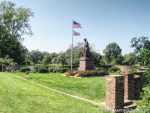
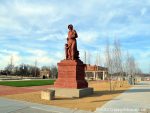 1. The first Madonna of the Trail monument I ever saw was, unsurprisingly, the one in my home state of Ohio. It originally stood about three miles west of downtown Springfield but was moved a little closer to town in 1956 or ’57. The first picture was taken in 2004 at the second location. I never saw her at her original location. The second picture shows her at her current home in downtown Springfield where she moved in 2011. Dedicated 1st, July 4, 1928. N39° 55.496′ W83° 48.677′
1. The first Madonna of the Trail monument I ever saw was, unsurprisingly, the one in my home state of Ohio. It originally stood about three miles west of downtown Springfield but was moved a little closer to town in 1956 or ’57. The first picture was taken in 2004 at the second location. I never saw her at her original location. The second picture shows her at her current home in downtown Springfield where she moved in 2011. Dedicated 1st, July 4, 1928. N39° 55.496′ W83° 48.677′
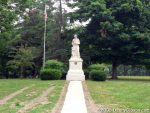
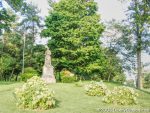 2. Of course, there’s also no surprise in the fact that my second Madonna was the one in Richmond, Indiana. Not only are these two Madonnas the closest to me, I believe they are closer to each other than any other pair. The first picture was taken in 2004 on the same day as a preceding picture of the Ohio Madonna. The second picture, with a clearer and brighter Madonna and a new walkway, was taken just two years later. Dedicated 9th, October 28, 1928. N39° 49.835′ W84° 52.334′
2. Of course, there’s also no surprise in the fact that my second Madonna was the one in Richmond, Indiana. Not only are these two Madonnas the closest to me, I believe they are closer to each other than any other pair. The first picture was taken in 2004 on the same day as a preceding picture of the Ohio Madonna. The second picture, with a clearer and brighter Madonna and a new walkway, was taken just two years later. Dedicated 9th, October 28, 1928. N39° 49.835′ W84° 52.334′
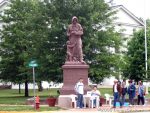 3. In 2005, I ventured one state beyond Indiana to visit my third Madonna of the Trail monument in Vandalia, Illinois. A festival that I never did identify, was in progress in the former state capital when we arrived. As part of the festival, raffle tickets were being sold at the base of the monument which sits on the grounds of the old capitol building. Dedicated 7th, October 26, 1928. N38° 57.649′ W89° 05.671′
3. In 2005, I ventured one state beyond Indiana to visit my third Madonna of the Trail monument in Vandalia, Illinois. A festival that I never did identify, was in progress in the former state capital when we arrived. As part of the festival, raffle tickets were being sold at the base of the monument which sits on the grounds of the old capitol building. Dedicated 7th, October 26, 1928. N38° 57.649′ W89° 05.671′
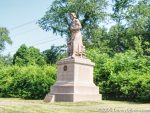 4. A month later, I added two Madonnas in the states just east of Ohio. The sightings occurred on the way home from a business trip to central Pennsylvania so that state’s Madonna, at Beallsville, was encountered first. Dedicated 10th, December 8, 1928. N40° 03.630′ W80° 00.776′
4. A month later, I added two Madonnas in the states just east of Ohio. The sightings occurred on the way home from a business trip to central Pennsylvania so that state’s Madonna, at Beallsville, was encountered first. Dedicated 10th, December 8, 1928. N40° 03.630′ W80° 00.776′
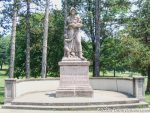 5. West Virginia’s Madonna of the Trail came next. It is positioned a little east of Wheeling. At this point, 80% of the Madonna monuments I had seen were situated on or very near golf courses and I began to think there might be some sort of symbiotic relationship between the two. Dedicated 2nd, July 7, 1928. N40° 03.362′ W80° 40.157′
5. West Virginia’s Madonna of the Trail came next. It is positioned a little east of Wheeling. At this point, 80% of the Madonna monuments I had seen were situated on or very near golf courses and I began to think there might be some sort of symbiotic relationship between the two. Dedicated 2nd, July 7, 1928. N40° 03.362′ W80° 40.157′
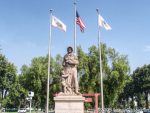 6. In September 2005, I bagged my fourth Madonna of the year and sixth overall. The California monument is not near a golf course or any other open space. It is in the city of Upland in the median of a busy street near an intersection with an even busier street. I would, in fact, never find another Madonna and golf course pairing. Dedicated 11th, February 1, 1929. N34° 06.434′ W117° 39.073′
6. In September 2005, I bagged my fourth Madonna of the year and sixth overall. The California monument is not near a golf course or any other open space. It is in the city of Upland in the median of a busy street near an intersection with an even busier street. I would, in fact, never find another Madonna and golf course pairing. Dedicated 11th, February 1, 1929. N34° 06.434′ W117° 39.073′
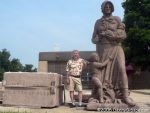
 7. In 2006, I drove the full length of the National Road in celebration of the 200th anniversary of the legislation that first authorized it. That took me past all of the Madonnas east of the Mississippi but only one of those was new to me. It was also missing. A sinkhole had endangered the Bethesda, Maryland, monument prior to my visit and it was stored a few miles away awaiting site repairs. That turned into an opportunity for my absolute favorite Madonna of the Trail photo ever. I was able to get a shot of the lady in her rightful place in 2011. Dedicated 12th, April 19, 1929. N38° 59.046′ W77° 05.655′
7. In 2006, I drove the full length of the National Road in celebration of the 200th anniversary of the legislation that first authorized it. That took me past all of the Madonnas east of the Mississippi but only one of those was new to me. It was also missing. A sinkhole had endangered the Bethesda, Maryland, monument prior to my visit and it was stored a few miles away awaiting site repairs. That turned into an opportunity for my absolute favorite Madonna of the Trail photo ever. I was able to get a shot of the lady in her rightful place in 2011. Dedicated 12th, April 19, 1929. N38° 59.046′ W77° 05.655′
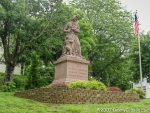 8. On the west edge of Lexington, Missouri’s Madonna of the Trail became my eighth in May 2007. Getting to two-thirds of the caboodle took just four years but it would be another four years before I would even get started on the last third. Dedicated 4th, September 17, 1928. N39° 11.197′ W93° 53.177′
8. On the west edge of Lexington, Missouri’s Madonna of the Trail became my eighth in May 2007. Getting to two-thirds of the caboodle took just four years but it would be another four years before I would even get started on the last third. Dedicated 4th, September 17, 1928. N39° 11.197′ W93° 53.177′
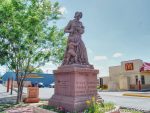 9. A two Madonna day started in 2011 with the monument in Springerville, Arizona. Here the idea of Madonna of the Trail monuments being given scenic pastoral settings really took a beating. This lady occupies a small plot adjacent to a MacDonald’s. The marker behind her identifies this as a stop on a historic driving tour. Dedicated 7th, September 29, 1928. N34° 07.993′ W109° 17.108′
9. A two Madonna day started in 2011 with the monument in Springerville, Arizona. Here the idea of Madonna of the Trail monuments being given scenic pastoral settings really took a beating. This lady occupies a small plot adjacent to a MacDonald’s. The marker behind her identifies this as a stop on a historic driving tour. Dedicated 7th, September 29, 1928. N34° 07.993′ W109° 17.108′
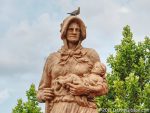
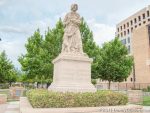 10. The second Madonna of the day was in Albuquerque, New Mexico. I’d been in Albuquerque before but had missed the monument. I had previously driven through the city on Historic US 66 which was the National Old Trails Road successor in these parts but I had not driven the original pre-1937 alignment which had followed the NOTR and on which the statue had been placed. Another complication was that the monument had been moved to the north corner of the area it was in which put it nearly a block away from even the old Sixty-Six alignment. To make up for missing it on earlier visits, I’ve included a picture of Madonna with a friend. Dedicated 6th, September 27, 1928. N35° 05.572′ W106° 38.991′
10. The second Madonna of the day was in Albuquerque, New Mexico. I’d been in Albuquerque before but had missed the monument. I had previously driven through the city on Historic US 66 which was the National Old Trails Road successor in these parts but I had not driven the original pre-1937 alignment which had followed the NOTR and on which the statue had been placed. Another complication was that the monument had been moved to the north corner of the area it was in which put it nearly a block away from even the old Sixty-Six alignment. To make up for missing it on earlier visits, I’ve included a picture of Madonna with a friend. Dedicated 6th, September 27, 1928. N35° 05.572′ W106° 38.991′
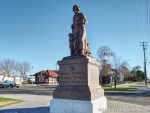 11. The count stayed at ten for another five years. I reached the final pair on consecutive days in 2016. The Madonna of the Trail monument in Lamar, Colorado, is next to an old train station now serving as a visitor center. Dedicated 5th, September 24, 1928. N38° 05.360′ W102° 37.147′
11. The count stayed at ten for another five years. I reached the final pair on consecutive days in 2016. The Madonna of the Trail monument in Lamar, Colorado, is next to an old train station now serving as a visitor center. Dedicated 5th, September 24, 1928. N38° 05.360′ W102° 37.147′

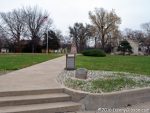 12. In Council Grove, Kansas, the setting for the Madonna of the Trail monument is pretty open. It’s a bit reminiscent of the park-like settings of my early Madonna visits even though there isn’t a golf course in sight. Dedicated 3rd, September 7, 1928. N38° 39.724′ W96° 29.212′
12. In Council Grove, Kansas, the setting for the Madonna of the Trail monument is pretty open. It’s a bit reminiscent of the park-like settings of my early Madonna visits even though there isn’t a golf course in sight. Dedicated 3rd, September 7, 1928. N38° 39.724′ W96° 29.212′
ADDENDUM 14-Jan-2024: After gathering the coordinates of all the Madonnas for another project, I decided to add them here.

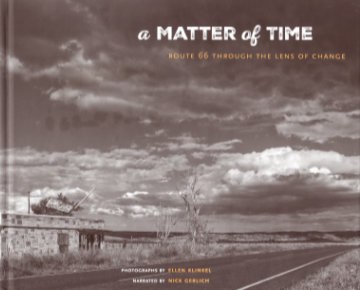 There’s not much point in counting the number of books published about Route 66; The likelihood that the count would increase before you were done is just too great. An Amazon search simply says “over 2,000”. So why review this one? What sets it apart from the others? The most obvious reason for reviewing it is a simple one: I know one of the people whose name is on the cover. The things that set it apart are not as obvious (or benignly biased). In fact, I’ve only found one thing about the book that I think is actually unique, and I’m not really sure about that. The book has no author; It has a narrator.
There’s not much point in counting the number of books published about Route 66; The likelihood that the count would increase before you were done is just too great. An Amazon search simply says “over 2,000”. So why review this one? What sets it apart from the others? The most obvious reason for reviewing it is a simple one: I know one of the people whose name is on the cover. The things that set it apart are not as obvious (or benignly biased). In fact, I’ve only found one thing about the book that I think is actually unique, and I’m not really sure about that. The book has no author; It has a narrator.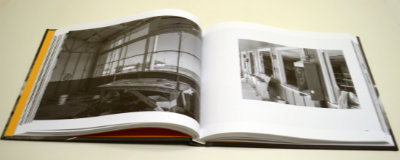 The photos are black and white, which is unusual but not unique. What may be unique is how they came to be at all. Klinkel tells that story in the book’s preface. It begins in 2013. She lives in Germany and was in the western U.S. with her husband for a four-week vacation which she describes as “the first time I ever had a serious camera in my hands”. Planned visits to several national parks fell victim to the sixteen-day government shutdown in October of that year and driving a portion of Route 66 was substituted. Klinkel credits this very first time on the historic highway coupled with the “serious camera” as having “instantly sparked my passion for photography”.
The photos are black and white, which is unusual but not unique. What may be unique is how they came to be at all. Klinkel tells that story in the book’s preface. It begins in 2013. She lives in Germany and was in the western U.S. with her husband for a four-week vacation which she describes as “the first time I ever had a serious camera in my hands”. Planned visits to several national parks fell victim to the sixteen-day government shutdown in October of that year and driving a portion of Route 66 was substituted. Klinkel credits this very first time on the historic highway coupled with the “serious camera” as having “instantly sparked my passion for photography”.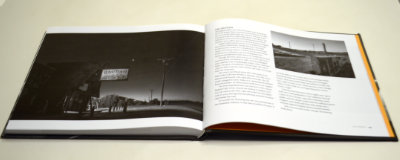 Most, but far from all, of the photos are of places I recognize from my own travels on Sixty-Six, and some of those nearly reproduce visions I’ve had myself. There are plenty of pictures of places I do not recognize. Sometimes that’s because they are from a location where I’ve never stopped or maybe even passed, but sometimes it’s because Klinkel sees and shares a vision that never occurred to me even though I’ve stood at or near the very spot she did. I don’t mean to imply that I expected anything else. It’s great to be shown something you’ve never seen, but it can be even better to be shown something known in a new way. Although it is a place I instantly recognized, a favorite example of being shown something in a new way is the early morning shot of the Bagdad Cafe with the coming sun just a tiny but significant twinkle. Another is the low-level shot of a protective wall of tires at a long-abandoned gas station at Texas Exit 0 of I-40.
Most, but far from all, of the photos are of places I recognize from my own travels on Sixty-Six, and some of those nearly reproduce visions I’ve had myself. There are plenty of pictures of places I do not recognize. Sometimes that’s because they are from a location where I’ve never stopped or maybe even passed, but sometimes it’s because Klinkel sees and shares a vision that never occurred to me even though I’ve stood at or near the very spot she did. I don’t mean to imply that I expected anything else. It’s great to be shown something you’ve never seen, but it can be even better to be shown something known in a new way. Although it is a place I instantly recognized, a favorite example of being shown something in a new way is the early morning shot of the Bagdad Cafe with the coming sun just a tiny but significant twinkle. Another is the low-level shot of a protective wall of tires at a long-abandoned gas station at Texas Exit 0 of I-40. However, something clicked on a rereading of that preface that hadn’t quite registered on the first pass. Klinkel explains the title quite clearly:
However, something clicked on a rereading of that preface that hadn’t quite registered on the first pass. Klinkel explains the title quite clearly: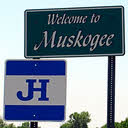
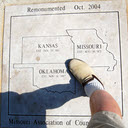
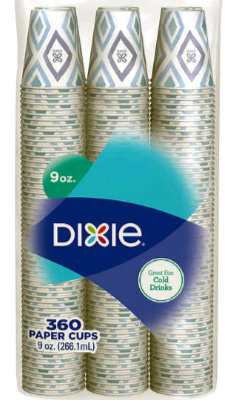 If something called a dixie existed, I have little doubt that we could refer to it differently without changing its aroma, but the word “dixie” doesn’t really identify anything. It is not, in other words, a common noun. As a proper noun — with a capital ‘D’ — it is used as both a surname and a given name and to identify a wide variety of things including a region of our country. People with a first, last, or nickname of Dixie surely outnumber things bearing the name but there are certainly plenty of those. It has been used to identify buildings, songs, currency, music groups, towns, counties, movies, beer, boats, ships, taverns, race tracks, waterways, restaurants, mountain ranges, athletic conferences, grocery stores, airports, schools, universities, and much more. With an ‘X’ made of a stylized flower, Dixie is a registered trademark of Georgia-Pacific for a brand of paper products.
If something called a dixie existed, I have little doubt that we could refer to it differently without changing its aroma, but the word “dixie” doesn’t really identify anything. It is not, in other words, a common noun. As a proper noun — with a capital ‘D’ — it is used as both a surname and a given name and to identify a wide variety of things including a region of our country. People with a first, last, or nickname of Dixie surely outnumber things bearing the name but there are certainly plenty of those. It has been used to identify buildings, songs, currency, music groups, towns, counties, movies, beer, boats, ships, taverns, race tracks, waterways, restaurants, mountain ranges, athletic conferences, grocery stores, airports, schools, universities, and much more. With an ‘X’ made of a stylized flower, Dixie is a registered trademark of Georgia-Pacific for a brand of paper products.

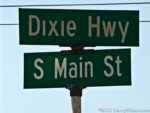
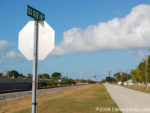
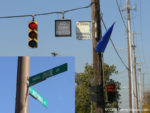
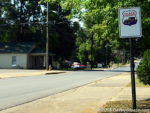

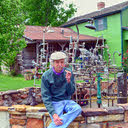
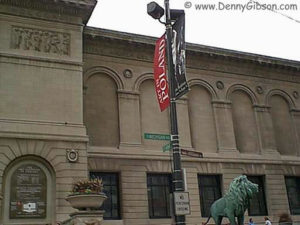
 A lot of things about the site have changed over the years but some things begun with that first trip have stuck. The concept of a page for each day with access to the next and previous day has been in place since the beginning as has a cover page with direct access to individual days. The idea of using the daily “Next’ and “Prev” button to (usually) represent the vehicle being used also goes back to that first trip. An animated GIF showing progress has been used on a few subsequent trips but it requires knowing the full route in advance and that’s often not the case. Besides, it’s a fair amount of work.
A lot of things about the site have changed over the years but some things begun with that first trip have stuck. The concept of a page for each day with access to the next and previous day has been in place since the beginning as has a cover page with direct access to individual days. The idea of using the daily “Next’ and “Prev” button to (usually) represent the vehicle being used also goes back to that first trip. An animated GIF showing progress has been used on a few subsequent trips but it requires knowing the full route in advance and that’s often not the case. Besides, it’s a fair amount of work.
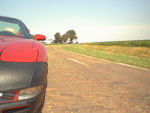
 The final cover page for that trip talks about it being temporary. As I said at the time, I expected it to go away because “I’ll need the space or retiring it will just seem right.” Web space became increasingly cheap and apparently retiring it never seemed right. Two decades later that first trip journal is still online and I’ve added 155 more. There is a
The final cover page for that trip talks about it being temporary. As I said at the time, I expected it to go away because “I’ll need the space or retiring it will just seem right.” Web space became increasingly cheap and apparently retiring it never seemed right. Two decades later that first trip journal is still online and I’ve added 155 more. There is a 